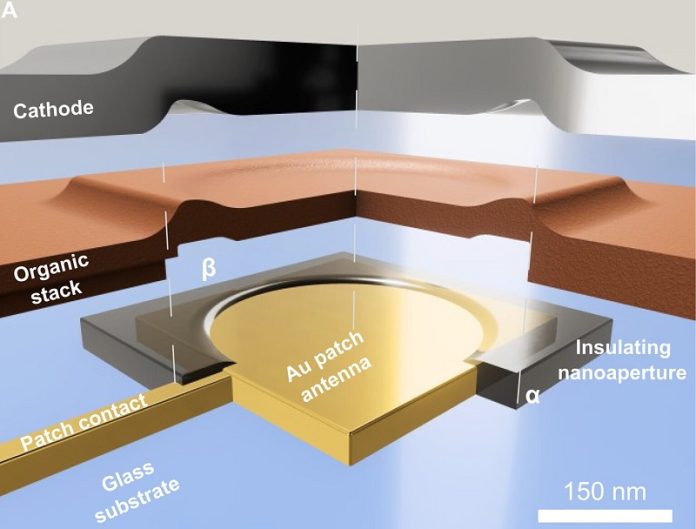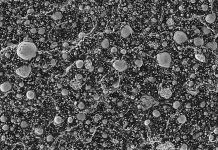
Imagine a high-resolution display so small it could fit on the arm of a pair of glasses—or even inside a contact lens.
Scientists at Julius-Maximilians-Universität Würzburg (JMU) in Germany have taken a major step toward that future by creating the smallest light-emitting pixel ever made.
Their innovation, published in Science Advances, could pave the way for ultra-compact, high-performance displays for smart glasses, augmented reality (AR), and virtual reality (VR) devices.
The research team, led by Professors Jens Pflaum and Bert Hecht, developed a new type of organic light-emitting diode (OLED) pixel that is only 300 by 300 nanometers in size.
To put that into perspective, a nanometer is one millionth of a millimeter—so tiny that millions of these pixels could fit on the head of a pin. Despite being so small, each of these pixels shines as brightly as a standard OLED pixel that is 5,000 times larger.
With pixels this tiny, an entire Full HD (1,920 x 1,080) display could fit into an area of just one square millimeter. This level of miniaturization means displays could be built directly into wearable technology, such as eyeglass frames, without adding bulk.
The image could then be projected onto the lenses, offering a lightweight and seamless way to view information—an essential advancement for next-generation AR devices.
OLED technology is already known for producing vivid colors, deep blacks, and high energy efficiency, since each pixel emits its own light without the need for a backlight. However, shrinking OLEDs to the nanoscale has long been a challenge.
When engineers tried to simply make existing designs smaller, the electrical currents concentrated at the pixel’s corners, much like lightning striking a metal rod.
This uneven current caused “filaments” to form—tiny conductive paths that eventually short-circuited and destroyed the pixel.
To solve this, the JMU team designed a new structure that includes a thin insulating layer on top of the pixel’s gold antenna.
Only a small circular opening, just 200 nanometers wide, allows current to pass through evenly. This clever design prevents the destructive growth of filaments and makes the nano-OLEDs stable for long-term use.
“Even the first nanopixels were stable for two weeks under normal conditions,” said Professor Hecht.
The next step is to improve the efficiency, which currently sits at about 1%, and to expand the technology to produce the full color range of red, green, and blue.
Once perfected, these miniature OLEDs could make ultra-small, ultra-bright displays possible for a wide range of applications—from smart glasses and medical implants to ultra-compact projectors.
This breakthrough shows that the future of wearable technology may not just be smart—it may also be nearly invisible.



